Nissan brings back the Leaf
Nissan is finally bringing the Leaf back next year. The Japanese company announced that it will be launching the third generation of the electric car this year. Production of the second generation was discontinued in Sunderland, UK, in March 2024.
The new Leaf will be available to order starting in autumn, with Nissan targeting the first deliveries for spring 2026. The price has not yet been announced, but the manufacturer has revealed all the important technical data.
It was already known in the run-up to today’s presentation that the new Leaf will have a new aerodynamic design and be based on the AmpR Medium platform (previously known as the CMF-EV platform). Measuring 4.35 x 1.81 x 1.55 metres and with a wheelbase of 2.69 metres, the five-seater is positioned between the larger Ariya (4.60 metres long) and the smaller Micra (3.97 metres). As is well known, the latter is a sister model of the electric Renault 5 and therefore differs fundamentally from the other two Nissan electric models in terms of its technical construction kit.
The Leaf will be available in two basic variants, a basic version with 130 kW of power and a 52 kWh battery for a range of up to 436 kilometres, according to WLTP and a technically more powerful version with a 160 kW motor, larger 75 kWh battery and a range of up to 604 kilometres. The torque and sprint power differ slightly between the two (345 vs. 355 Nm and 8.6 vs. 7.6 seconds from 0 to 100 kph), but not the top speed, which is limited to 160 kph.
The differences are more striking when it comes to DC charging: While the Leaf with the large battery can draw direct current of up to 150 kW at the charging station, the version with the small battery can only draw 105 kW. However, according to Nissan’s preliminary figures, both need just under 30 minutes to charge from 20 to 80 per cent, which is rather mediocre for an electric car launched in 2025. The manufacturer also states an AC charging capacity of 11 kW, and a V2L function with up to 3.6 kW is available for charging external devices. The new Leaf is also prepared for V2G, or vehicle-to-grid technology. However, the Japanese company has not specified when this function will be activated in which market.
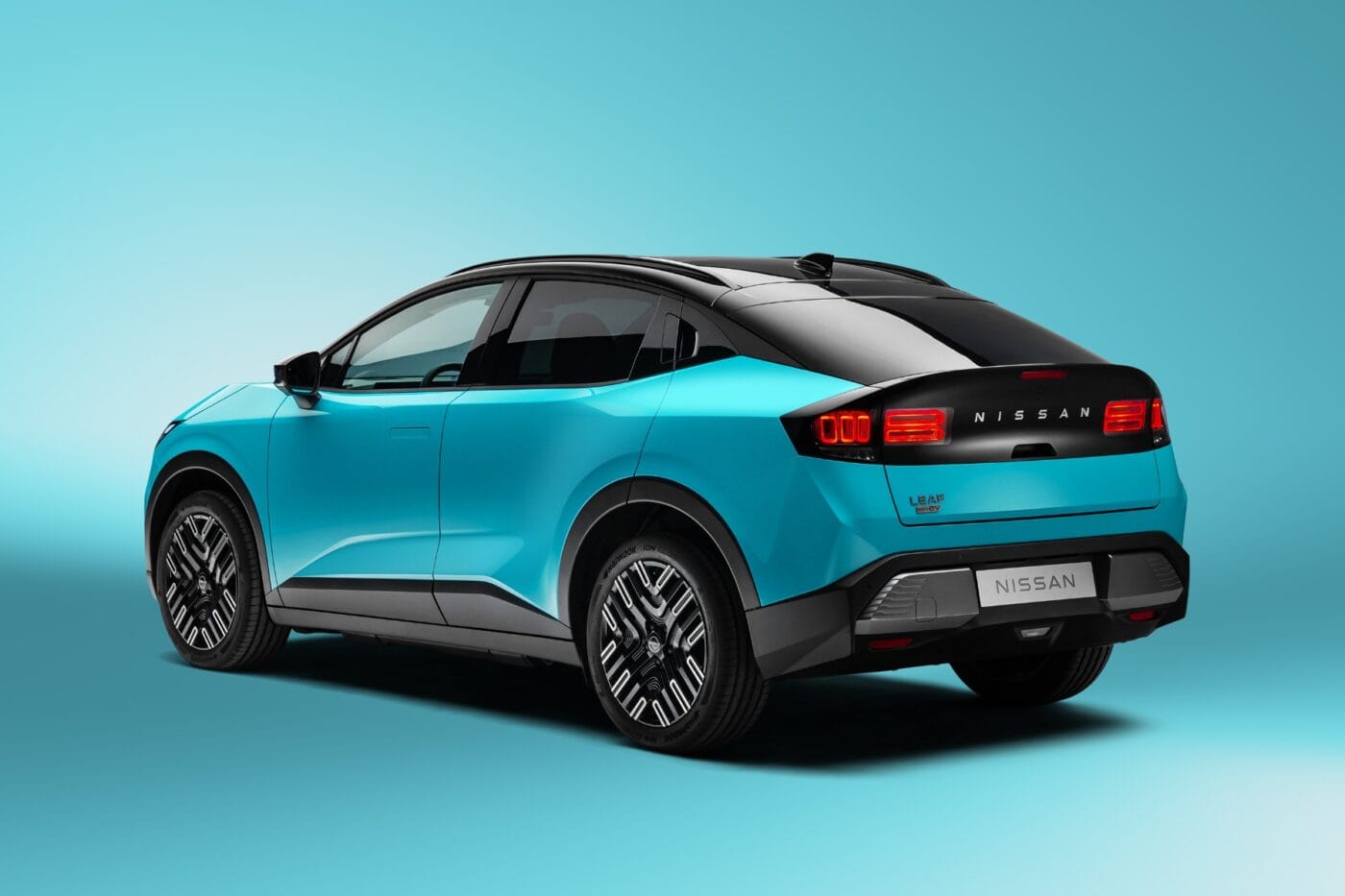
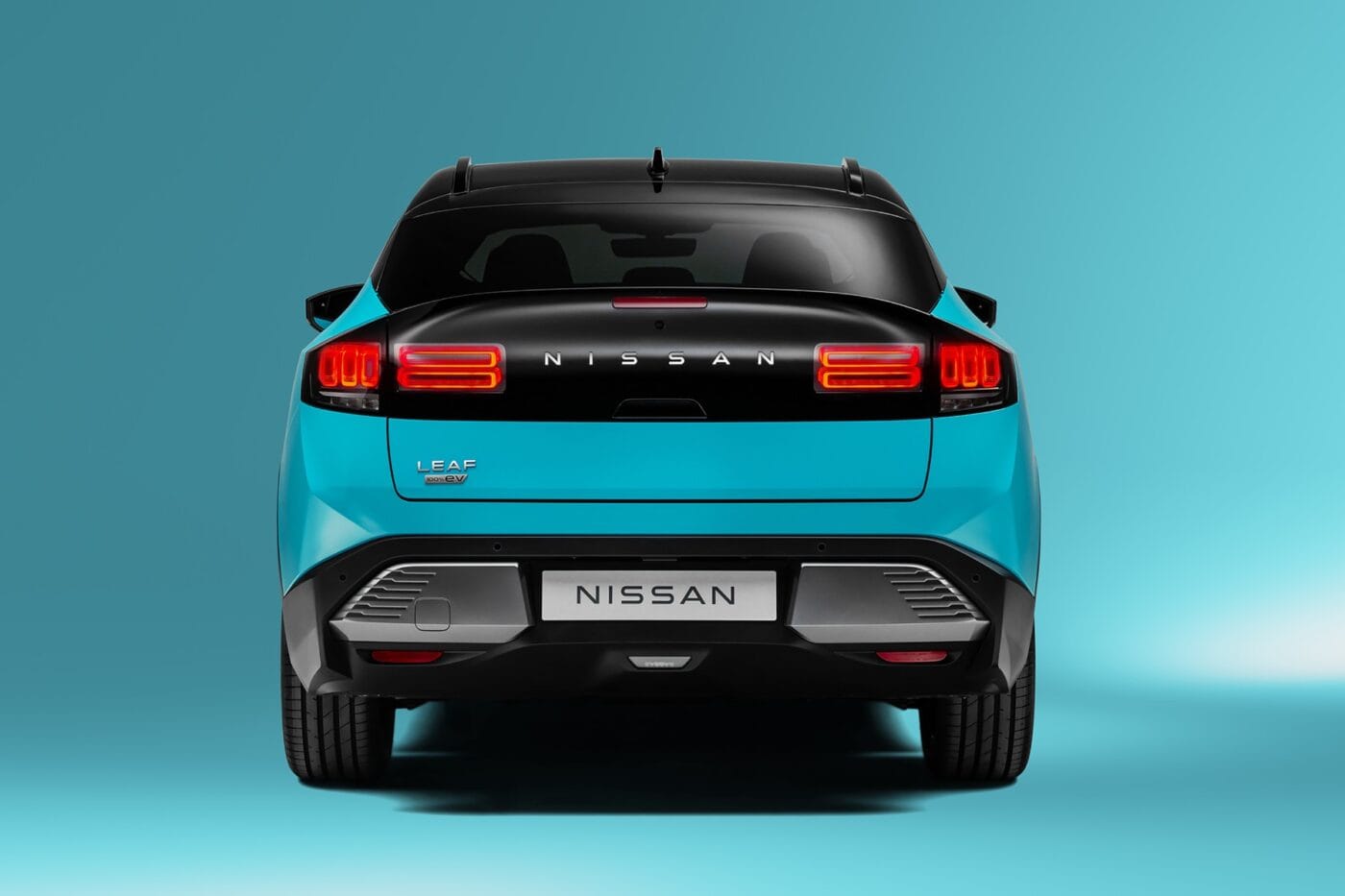
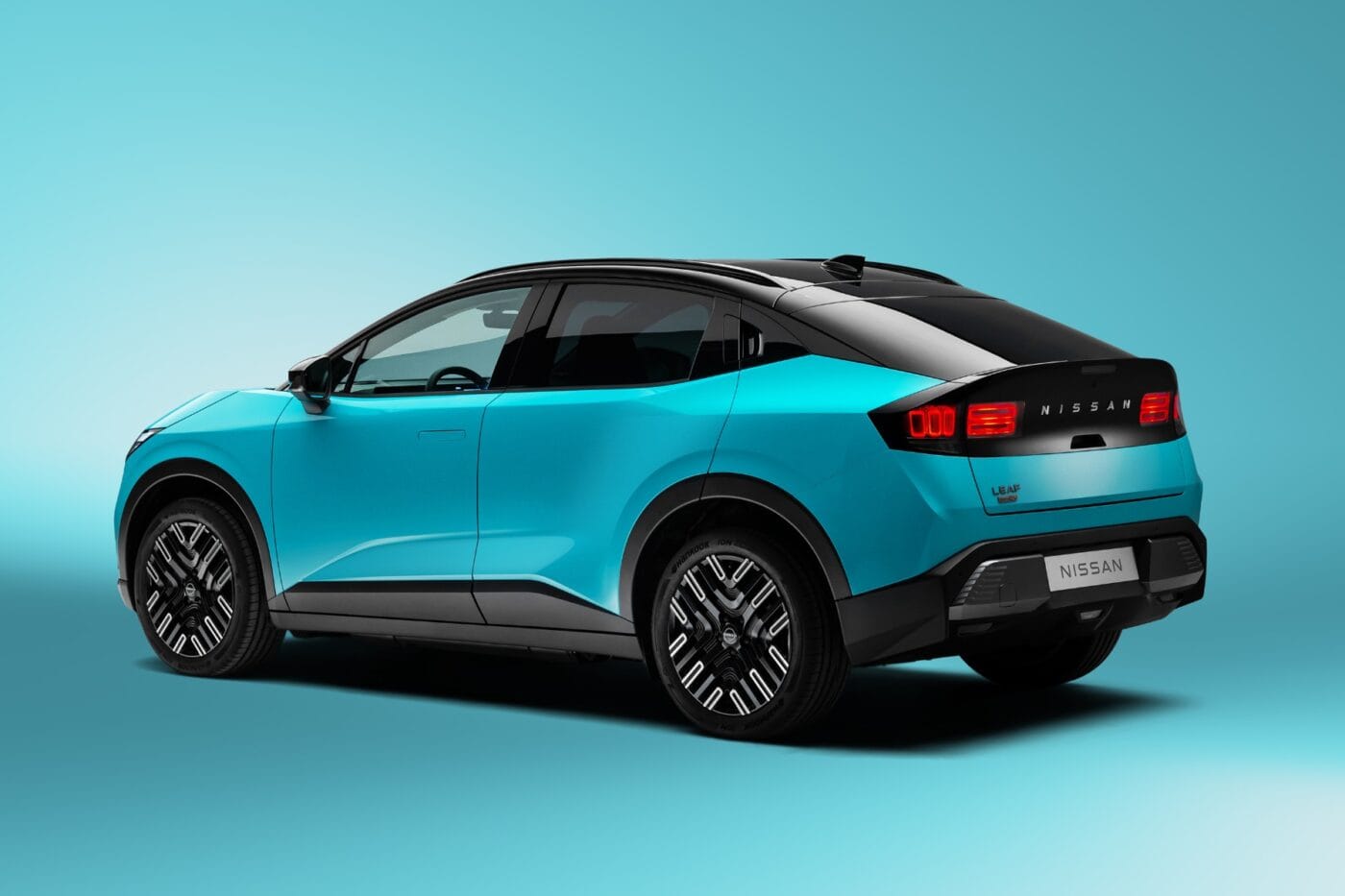
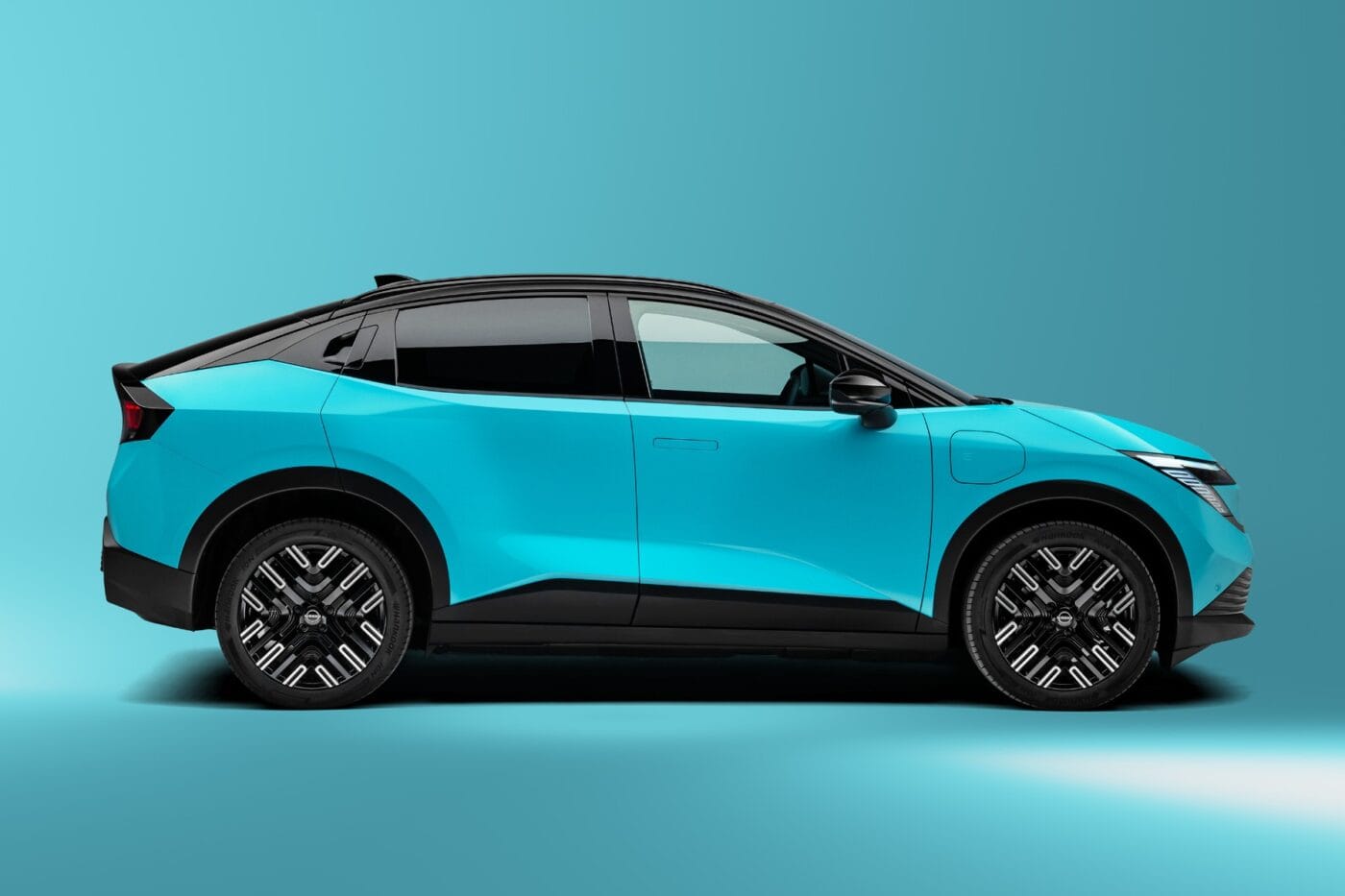
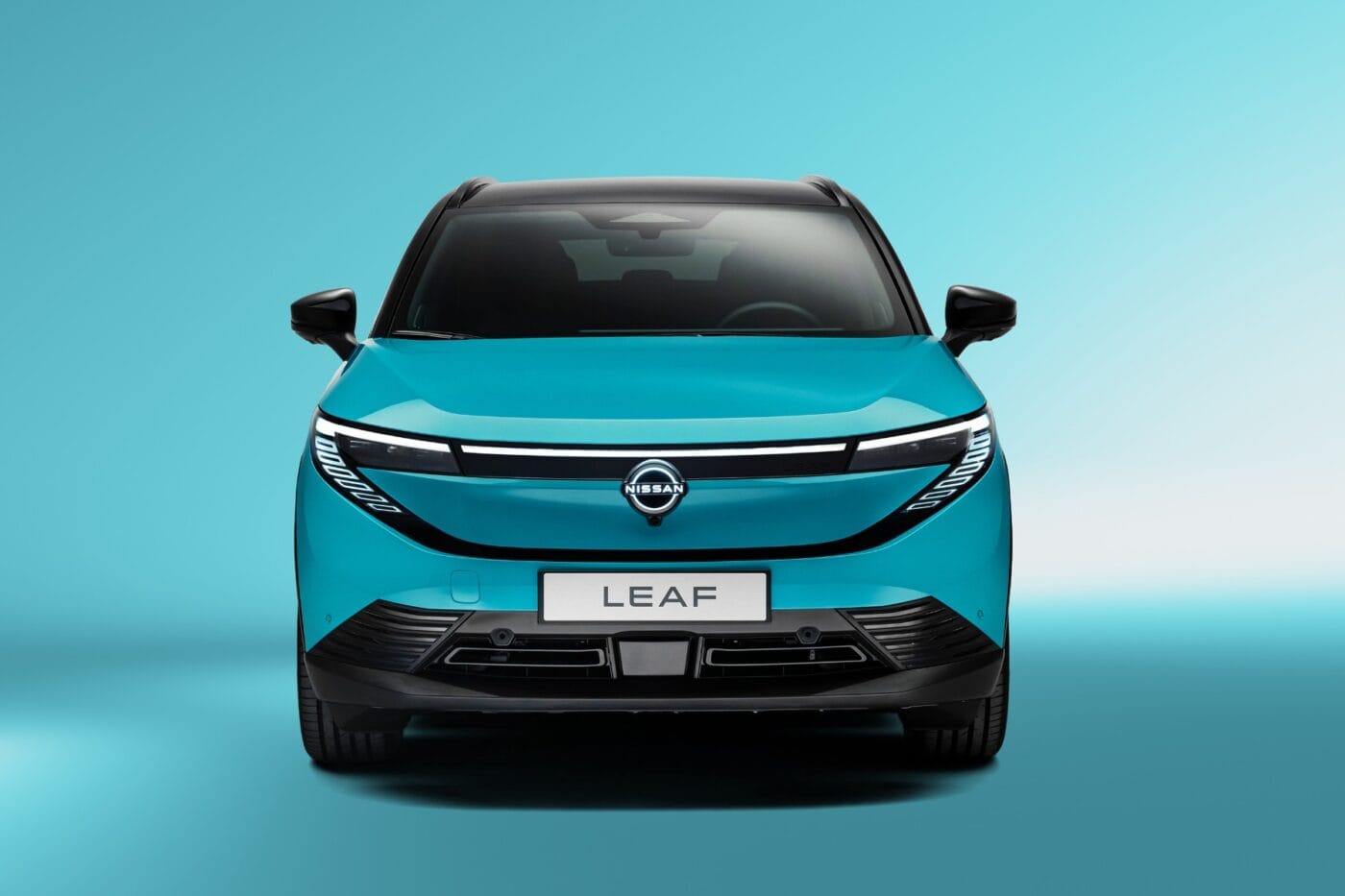
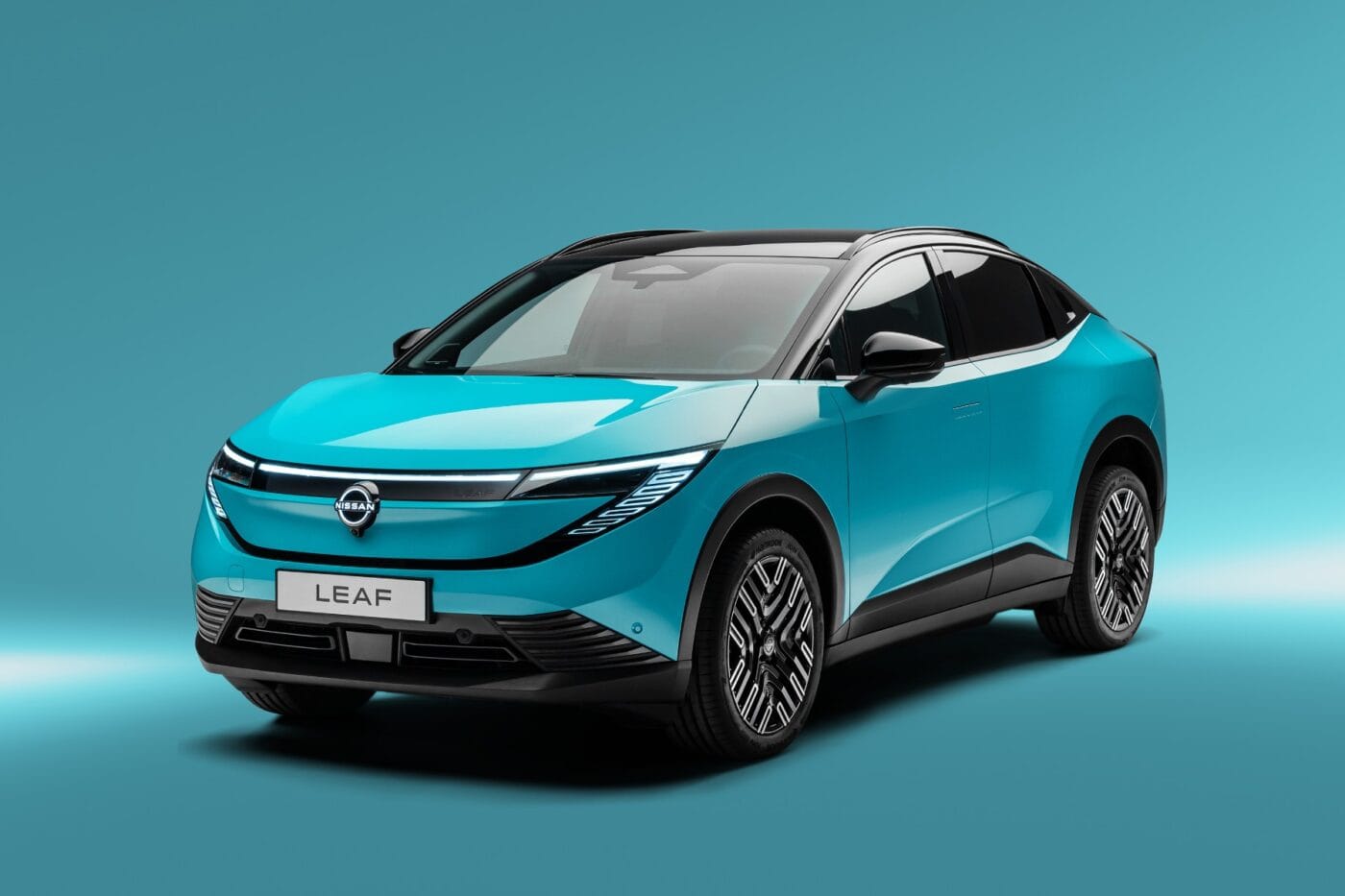
Instead, they emphasise the all-around characteristics of the compact car for daily commuting and long journeys. For the chassis layout, Nissan has opted for a MacPherson front suspension in combination with a multi-link rear axle for driving comfort, for example. Charging on the road should also benefit from intelligent battery temperature management, which automatically brings the battery into the optimum temperature window shortly before the charging stop (via connection to the Google Maps route planner). The integrated Google system will also take care of route planning. A boot capacity of 437 litres, according to the VDA, is also intended to contribute to the practicality of the car. Depending on the equipment variant, the Leaf also has roof rails for mounting roof racks.
Visually, the third generation differs significantly from its predecessors. Nissan’s Global Design Studio, based in Japan, has trimmed the Leaf for aerodynamics, which is reflected in a drag coefficient of 0.25. This is better than the 0.28 achieved in the previous generation. This is better than the 0.28 of the second generation Leaf, although at 1.79 metres it was two centimetres slimmer (and incidentally also 15 centimetres longer) than the third generation now presented. Nissan cites flush door handles, the flowing roofline and a complete underbody panelling as guarantees for good aerodynamics.
Other design features include a continuous light strip at the front, striking 3D tail lights at the rear and a tinted panoramic glass roof. Inside, the designers emphasised clear lines and good visibility. There is a choice of two interior colours (black or white with purple accents) and seven exterior paint finishes, some of which are eye-catching, including the turquoise shade ‘Luminous Teal’. The alloy wheels are available in 18- and 19-inch versions.
In terms of connectivity, Nissan relies on the aforementioned Google services (including Google Maps, Google Assistant and Google Play Store), which can be controlled directly via the two 14.3-inch screens in the vehicle. The new Leaf also enables passengers to control functions such as navigation, air conditioning and media by voice. The model also supports over-the-air updates and the manufacturer’s central service app (‘NissanConnect Services’).
Nissan also lists a bundle of driving assistants as safety features, including an intelligent adaptive speed and distance assistant, a lane departure warning system and driver monitoring. The level of recuperation can also be adjusted via paddle shifters, including the ‘e-Pedal Step’. The ProPILOT Assistant system, which adapts the speed to bends and changing speed limits thanks to networking with the sat nav, is also available as an option. The Leaf also offers an ‘Around View’ monitor with real-time road visualisation for driving manoeuvres in confined spaces.
“The all-new LEAF reflects our commitment to delivering EVs that exceed expectations – not just in range, performance and technology, but in how seamlessly they integrate into the daily lives of our customers,” emphasised Clíodhna Lyons, Regional Vice President, Product and Services Planning of Nissan AMIEO (Africa, Middle East, India, Europe and Oceania). “This evolution of our iconic nameplate represents the very best version of itself – it’s smarter, more connected, and more capable for a new generation of drivers.”
| Leaf Standard | Leaf Extended | |
|---|---|---|
| Power | 130 kW | 160 kW |
| Acceleration | 8.6 s | 7.6 s |
| Top peed | 160 kph | 160 kph |
| WLTP Range | 436 km | 604 km |
| Battery capacity (net) | 52 kWh | 75 kWh |
| Charge capacity DC | 105 kW | 150 kW |
| Charging time DC 20-80% | < 30 min | < 30 min |
| Charge capacity AC | 11 kW | 11 kW |
| Charging time AC | – | – |
| V2L | Yes (3.6 kW) | Yes (3.6 kW) |
| Price | – | – |
The new Leaf will be built at the British Nissan plant in Sunderland as the first model under Nissan’s EV36Zero initiative, which aims to turn Sunderland into an eMobility production hub. In this context, a component plant of the Japan Automatic Transmission Company (JATCO) and another battery factory have also been announced on site, which, like the existing battery cell plant in Sunderland, will presumably be built together with partner AESC (formerly: Envision AESC). Nissan presented the EV36Zero project in 2021 with an initial investment volume of one billion pounds, and has since announced the expansion of the investment to 3 billion pounds. At the heart of EV36Zero are three all-electric models: the now-unveiled successor to the pioneering Leaf model and electric versions of the popular Qashqai and Juke ranges.
However, the Leaf has a special status at Nissan. With 700,000 sales worldwide, the first model in particular became a former eMobility bestseller. The first generation was produced from 2010 to 2017, and the second generation was presented in September 2017 and delivered from January 2018. The last Leaf rolled off the production line in Sunderland in March 2024. The European vehicles always came from the British plant. However, the second generation was not the success that was hoped for, as Nissan had opted for the CHAdeMO fast-charging standard (while CCS fast chargers have become established in Europe), among other things, and the battery was not cooled with liquid, which led to overheating and extremely low charging performance in summer or during repeated fast-charging processes over long distances.
Source: Info via email, nissannews.com



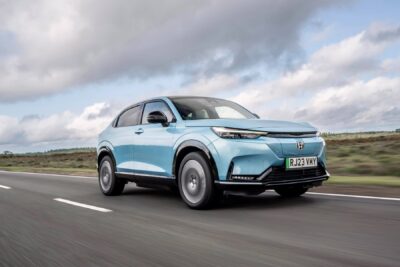
4 Comments